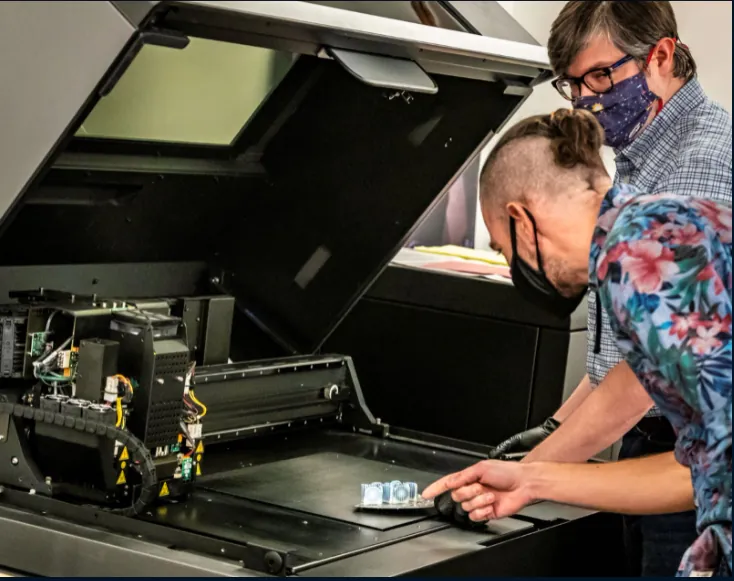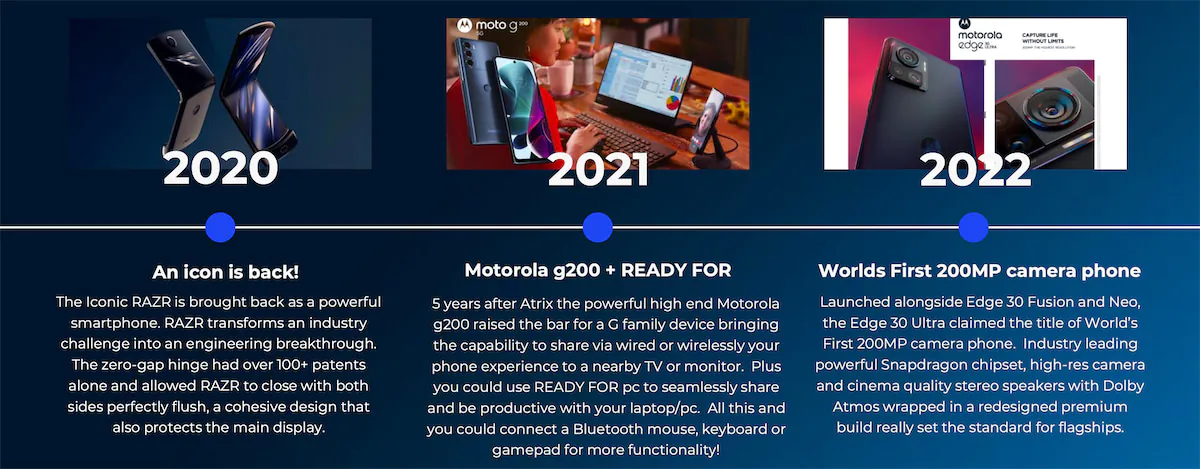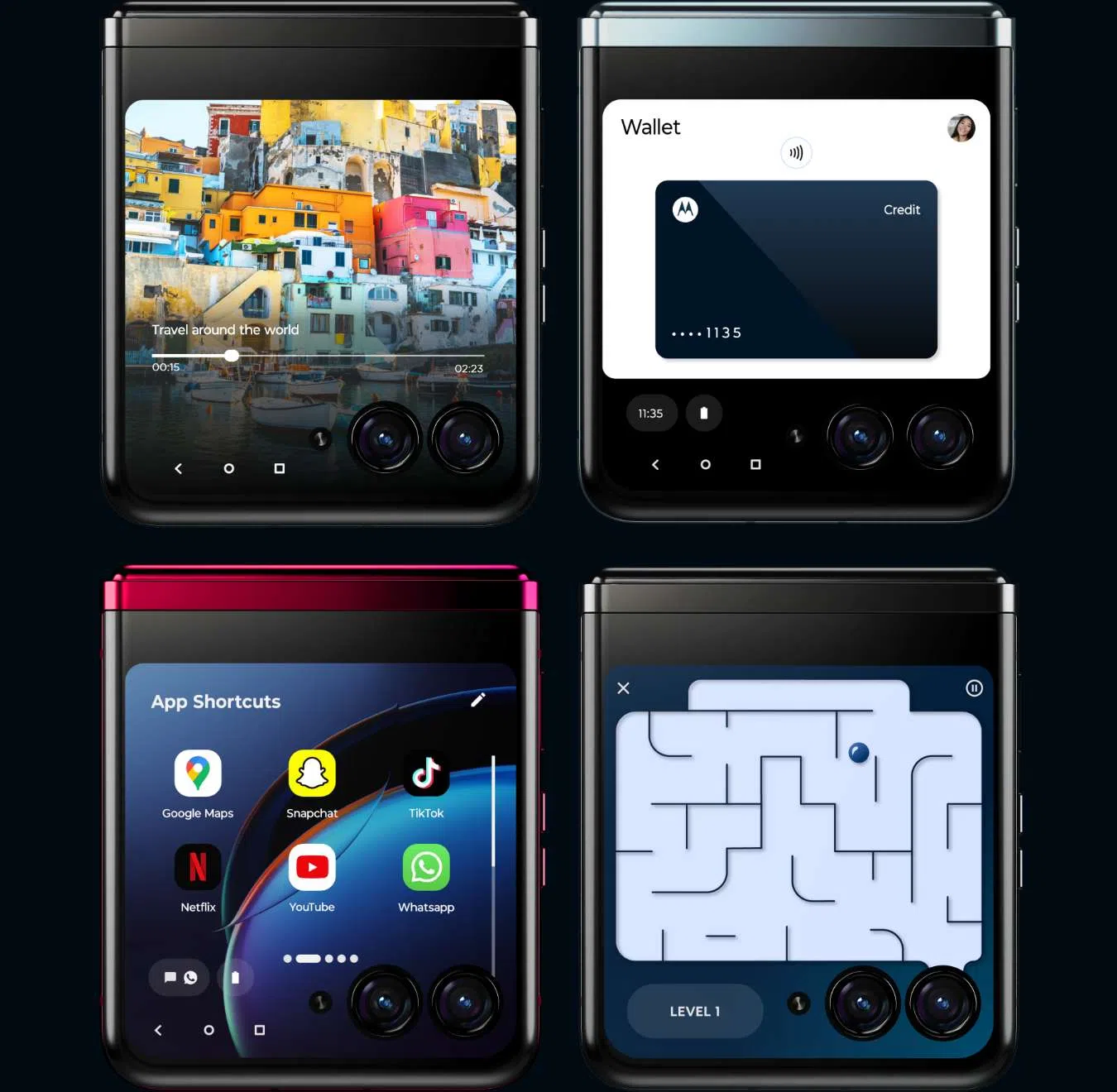© ROOT-NATION.com - Use of content is permitted with a backlink.
Ah, Motorola. For a long time, there was no one cooler than you. The in-your-face ads, the head-turning Razr series, and that catchphrase that, for a while, was everywhere… those were good times. But the aughts are in the past — very much unlike Motorola, who seem to be doing just fine even in this Apple-dominated world. It’s a brand that still tries to innovate and stay ahead of the curve.
But we’re not going to dwell on the past. The modern smartphone market is as varied as it’s ever been, with both traditional phones and foldables fighting it out. Let’s look at how Motorola is faring.

Motorola’s 312 Labs: Where the magic happens
In 2021, Motorola launched a new innovation lab in Chicago. Motorola 312 Labs combines research, design, and engineering teams to develop new products for mobile technology’s future. The lab’s name comes from the 312 area code in Chicago, which reflects Motorola’s connection to the city even after Lenovo’s acquisition.

This is where Motorola tries to set itself apart from its competitors by creating both innovative and long-lasting products. And while Motorola and Chicago go a long way back, the lab is not actually a lab but an international task force with experts from all over the world. The results are already visible: Motorola has achieved its most successful quarter in the United States since LG’s departure from the market, securing the third position with a year-over-year growth percentage.
This year, the group of innovators already presented two unique form factors: the 5G XR neckband and the rollable smartphone concept. The 5G XR neckband works with AR glasses and VR goggles and lets users see content on bigger and better screens around them without needing a smartphone, while the rollable smartphone can change its size and shape.
Innovation is one thing, but you might have noticed how modern devices don’t seem to last very long. Motorola noticed it, too, and devised unique methods of testing their phones for reliability.

From simple drop tests to gyro rests, the company leverages its decades-long experience in making phones that refuse to break. And while that goal is still hard to achieve, Moto is getting there, one test at a time.

Read also: Motorola celebrates 10th anniversary of Moto G series with 200 million devices sold
Razr is back. Or has it never left?
I used to own a lot of phones back in the day, but I always regretted not trying a Razr device. Sleek and stylish, it was the thing to have. Thankfully, I still have my chance.
In 2019, Motorola reimagined the Razr as a foldable smartphone, the Motorola Razr. The updated 5G version of the device featured a 6.2-inch foldable P-OLED display, a Snapdragon 765G processor, 8GB RAM, and 256GB storage. The zero-gap hinge alone boasted an impressive portfolio of over 100 patents! A worthy successor? It definitely looked the part, and the reviews agreed: the king was back. Two main things it lacked were an IP rating and a better battery life.
In 2022, the Edge 30 Ultra proudly earned the accolade of being the world’s first 200MP camera phone. In 2023, the Lenovo ThinkPhone by Motorola emerged, designed to seamlessly unite PC and mobile experiences.

In 2023, Motorola also introduced the Motorola Razr+. This device runs on Android 13 and is powered by the Snapdragon 8+ Gen 1 Mobile Platform. The Razr+ features a larger 6.9″ FHD+ pOLED main display and a 3.6″ pOLED external display. The battery has also increased to 3800mAh and supports 30W TurboPower charging.
Motorola promised innovation and delivered it in the form of one of the sleekest foldable smartphones on the market. While there is always a place for improvement, it was hard to deny the fact that the pizzazz of the older Razr phones was back. The devices demanded attention, and the Moto brand has grown in stature.

AI, the new generation of glass, and so much more
I’m not in the business of reviewing tech just for the fun of it (well, maybe I totally am). What I hope for is to see the innovations one of the first. And while I have an enormous respect for companies that can endlessly improve on their devices, taking them to the brink of perfection, I, like many others, am more interested in bold new experiments. That is why Motorola is fun to follow: their 312 Labs often come up with off-the-wall ideas one can’t help but pay attention to.
How about… A flexible FHD+ pOLED display that can look like pretty much anything? Just a few years ago, wearing a wholly folded phone on your wrist seemed like a science fiction concept, and now it’s pretty much a reality. I don’t know how convenient that is, but it certainly is cool. It’s very Hello Moto.

AI has also entered our lives out of nowhere, destroying everything we thought we knew about machine learning. Motorola has recently introduced a new concept in which users can extend their personal style to their phones with the help of a generative AI model that can run locally on the device. On-device AI has been a sort of a holy grail for phone companies ever since ChatGPT opened its doors to the public, and the possibilities truly are exciting. I can’t wait until my phone replies to everyone I don’t want to talk to on its own.
Lenovo is also in the process of developing a personal assistant that can be used on both PCs and smartphones. It can completely change our perception of “smart assistants.”
Smartphones should be fun. Moto gets that
I’m not here to start a holy war. Apple vs Google, Moto vs Pixel… not interesting to me. But, like many people I know, I grew tired of the increasingly stale market of smartphones. What once was exciting and novel became stale. Better screens, better camera, and battery is all good, but hardly thrilling. So when a company makes a point of trying something new, I can’t help but take notice. Moto had a period of time when the pace of innovation seemed slower, and the products looked less inspired than we’ve grown to expect from them. That seems to be changing, which excites me, a person who loves tech. Even if I never end up buying a Moto phone, I will be rooting for them nonetheless.

